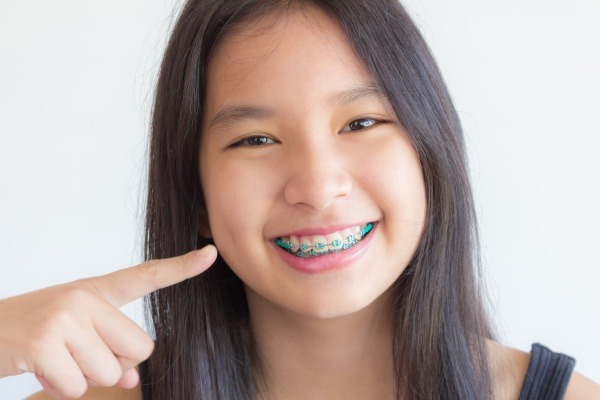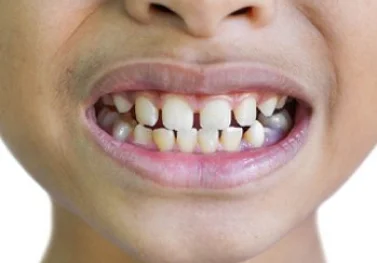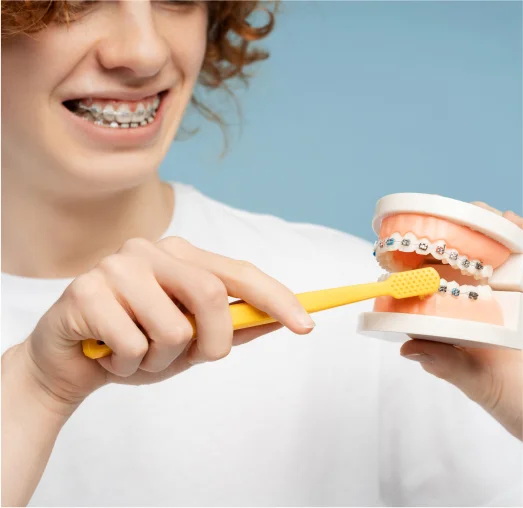The Reliable Method for Straightening Your Smile

How Braces Straighten Your Smile
At OWL Pediatric Dentistry, we understand that achieving a straight, healthy smile is a journey, and traditional braces have been a trusted method for many years. Braces work through a combination of metal brackets, wires, and rubber bands, which apply gentle, consistent pressure to gradually shift teeth into their ideal positions. The brackets are securely bonded to the teeth, with an arch wire running through them, periodically adjusted by your orthodontist to guide movement over time. Additional components, such as rubber bands, may be used to correct bite issues like overbites or underbites. Depending on the complexity of the case, treatment can take anywhere from 1 to 3 years. Regular check-ups at OWL Pediatric Dentistry ensure precise adjustments and steady progress, helping you achieve a beautifully aligned smile with lasting results.
Orthodontic Problems Braces Can Correct
Braces are a highly effective solution for a variety of orthodontic concerns, helping to improve both dental function and aesthetics. They can correct misaligned teeth, overcrowding, and gaps, ensuring a well-aligned smile. Braces also address bite issues, such as overbites, underbites, and crossbites, where the upper and lower teeth do not fit together properly. Additionally, they can fix open bites, where the upper and lower teeth don’t meet when the mouth is closed, and help with tooth rotation. By applying steady pressure over time, braces gradually shift teeth into their ideal positions, creating a healthier, more confident smile.


Crowded Teeth
Crowded teeth happen when there isn't enough space in the jaw for the teeth to properly align, causing them to overlap or twist. This can make oral hygiene more challenging, as cleaning between the crowded teeth becomes difficult, raising the risk of cavities and gum disease.

Bite Alignment
Bite alignment refers to how the upper and lower teeth come together when the mouth is closed. Misaligned bites, including overbites, underbites, or crossbites, can lead to discomfort, trouble with chewing, and potential long-term dental problems.

Gaps Between Teeth
Gaps between teeth, or diastema, occur when there is extra space in the jaw, causing the teeth to be spread apart. Although some gaps are purely cosmetic, they can also lead to bite alignment problems and make it harder to clean between the teeth.

How to Properly Care for Your Braces
Maintaining good oral hygiene while wearing braces is crucial for a smooth and effective treatment process. Brushing after every meal and using floss threaders or interdental brushes helps clear food particles and plaque buildup around brackets and wires, reducing the risk of cavities and gum disease. Increasing your hygiene visits to three times a year is recommended; professional cleanings can help prevent cavities and keep your teeth and gums healthy.
Regular visits to your orthodontist are essential for adjustments and progress monitoring. During these check-ups, the wires may be tightened or replaced, ensuring your teeth continue to shift correctly. Following your orthodontist’s recommendations, such as wearing rubber bands or retainers as instructed, will help you achieve optimal results while potentially shortening your treatment time.
Frequently Asked Questions About Braces
Braces are a proven method for straightening teeth, but patients often have questions about the treatment process.
Here are some common concerns:
- “How long will I need to wear braces?”
Treatment duration typically ranges from 1 to 3 years, depending on the complexity of the dental issues.
- “Are braces painful?”
While some discomfort may occur after adjustments, it is usually mild and can be managed with over-the-counter pain relief.
- “Can I eat normally with braces?”
While most foods are fine, certain hard, sticky, or chewy foods should be avoided to prevent damage to the brackets and wires.




